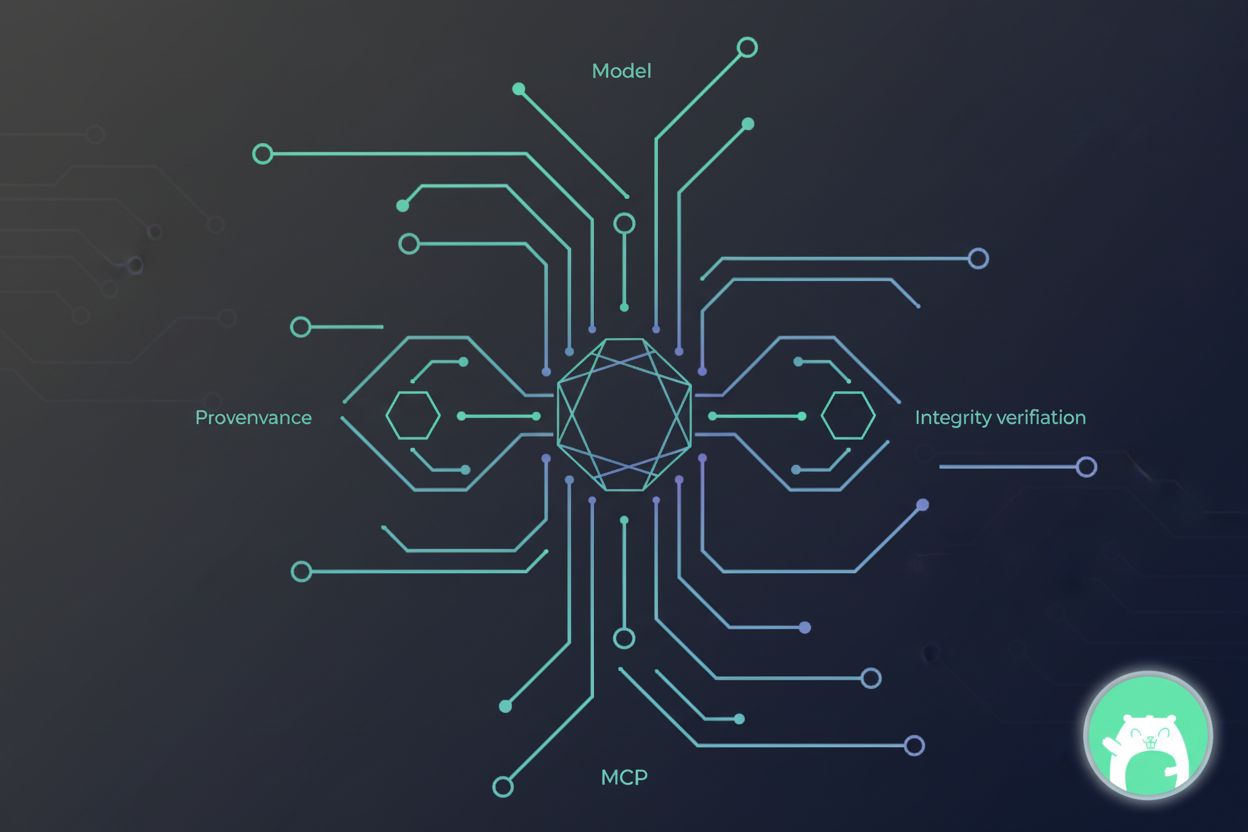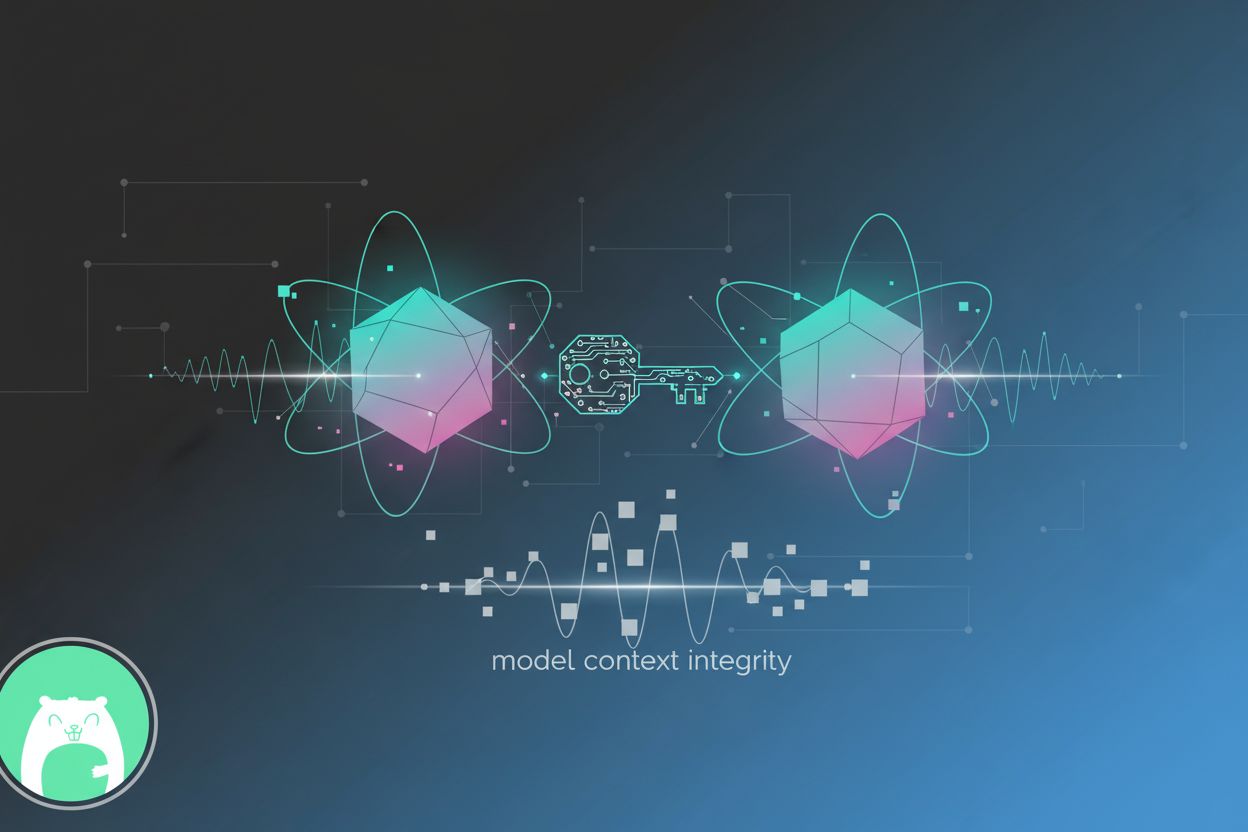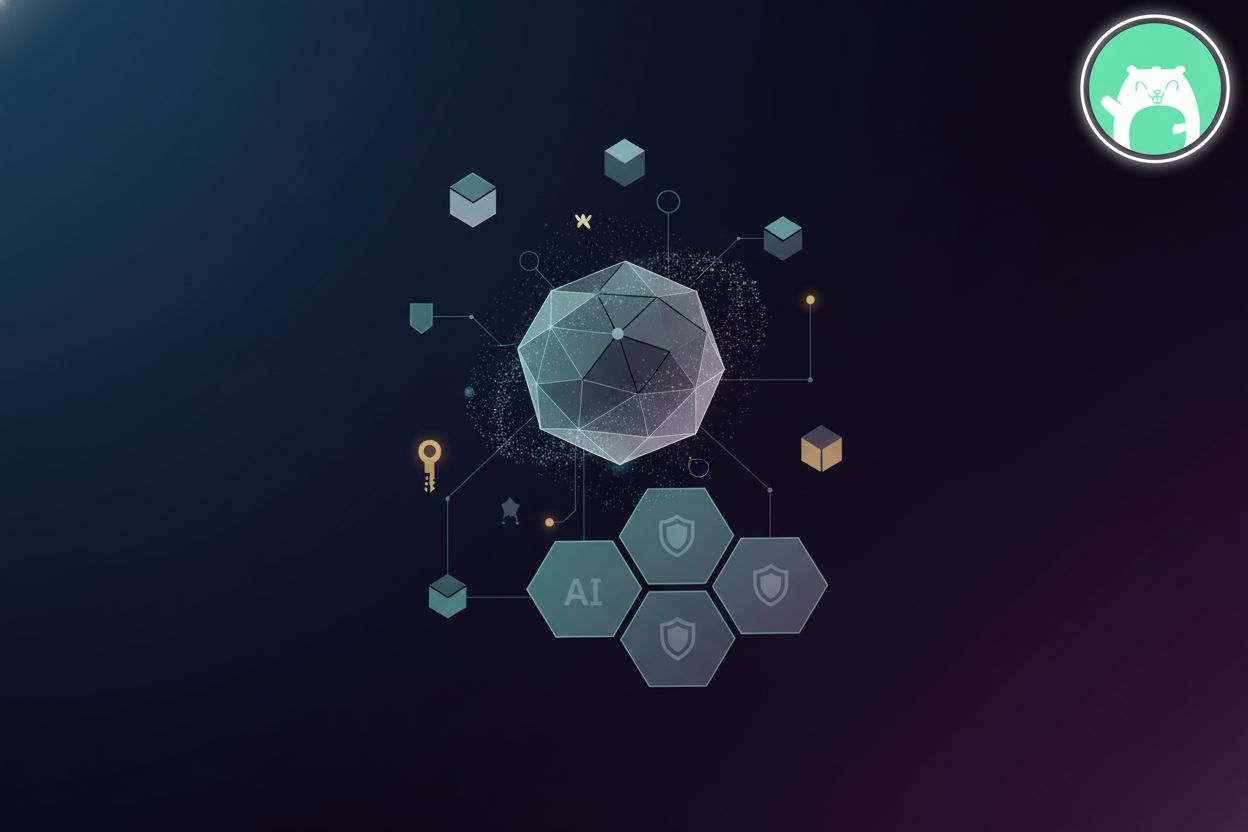Quantum-Resistant Digital Signatures for Model Provenance and Integrity Verification in MCP

TL;DR
Introduction: The Imperative of Quantum-Safe Security for MCP
Okay, so why is quantum-safe security even a thing for Model Context Protocol (MCP)? It might sound like sci-fi, but the threat is very real, especially with all the advancements in ai.
- Current cryptographic methods are vulnerable to quantum computing attacks. (8 Quantum Computing Cybersecurity Risks [+ Protection Tips]) Imagine your MCP environment, used in, say, a healthcare diagnostic tool, suddenly becomes exposed.
- We need quantum-resistant solutions! Think of it like upgrading the locks on your doors, but for ai.
- NIST is already on it, approving quantum-resistant encryption standards, as noted by Industrial Cyber - it's all about bolstering our cybersecurity posture for the future and start now!
Next up, we'll explore why model provenance and integrity are crucial in MCP.
Understanding Model Provenance and Integrity in MCP
Okay, so you're probably wondering why model provenance and integrity is even a big deal, right? Well, let me tell you, it really is.
- Model provenance is all about tracing an ai model's origin and development. Ever wonder, like, where did this thing come from? Provenance tells you. It is important for figuring out who's responsible if things go wrong, like when an ai retail recommendation system starts suggesting completely inappropriate products. It also helps in auditing model behavior, ensuring compliance with regulations, and identifying potential biases introduced during development.
- Integrity verification uses digital signatures to make sure no one's been messing with the model. Imagine someone sneaks in and tweaks a financial model to favor certain trades--not good! In practice, this means a recipient uses the sender's public key to verify the digital signature against the model's hash, confirming it hasn't been altered.
- Compromised ai models are a huge risk across industries. Think about healthcare—a tampered model could lead to misdiagnoses!
I've seen cases where companies using open-source models basically had no clue about the model's history. It was like playing Russian roulette with their data and security!
Verifying model integrity is a must-do, now.
The Quantum Threat to Digital Signatures
Okay, so quantum computers are coming for our digital signatures, right? It's not if, it's when they'll be powerful enough to break stuff. Scares me a little, honestly.
- Shor's algorithm is the big baddie here. It's like a super-efficient code-breaker that can crack widely-used asymmetric encryption algorithms. Think rsa or ecc--gone.
- This means the digital signatures we rely on for, well, everything are vulnerable. Model provenance? Integrity checks? All at risk if someone can forge signatures, and that's bad news for ai.
- The impact on existing digital infrastructure is huge. Imagine ai-driven medical devices getting compromised because someone spoofed a signature. Not good.
- Transitioning to post-quantum cryptography (pqc) isn't just a good idea, it's like a need-to-do-yesterday thing. We have to future-proof our systems before quantum computers make current security worthless.
NIST's already approved some pqc standards, as noted by Industrial Cyber - it's a start, but there's more work to be done. Next up, we'll delve into the technical details of quantum-resistant digital signature schemes.
Quantum-Resistant Digital Signature Schemes: A Technical Overview
Alright, so you're probably thinking, "Quantum-resistant signatures...sounds complicated". Honestly, it kinda is, but let's break it down, yeah?
We gotta talk about some specific schemes, though, right? I mean, that's where the rubber meets the road.
Lattice-based cryptography is a big contender. The math is...well, it's lattices. Imagine a super regular grid, but in many dimensions. Algorithms like CRYSTALS-Dilithium use these lattices to make breaking the signatures super hard, even for a quantum computer. NIST has actually approved ML-DSA, which uses CRYSTALS-Dilithium, as a standard for digital signatures, as evidenced by NIST - pretty cool, huh?
Then there's hash-based signatures, like SPHINCS+. These bad boys rely on the security of hash functions. Basically, you can only sign something a limited number of times, but it's really hard for someone to fake your signature.
And, hey, there's multivariate cryptography. It's...interesting. It could work, but there's still a lot of research going on. It's kinda like the dark horse in this race. Its potential lies in offering relatively fast signature generation and verification, but the schemes can be quite complex and require larger key sizes compared to some other pqc approaches.
Basically, we're swapping out old math for new math that quantum computers, hopefully, can't crack. It's a race against time, honestly.
So, what's next? We'll see how these schemes actually get put to use in MCP environments, so keep reading.
Implementing Quantum-Resistant Signatures in MCP for Superior Protection
Alright, let's talk about slapping some quantum-resistant signatures into MCP, yeah? It's not just about having 'em, but how we actually use them.
- First, you gotta swap out the old signature schemes. That means integrating lattice-based or hash-based signatures into your MCP workflows. Think about a supply chain using ai for logistics; you'd need to make sure every model update is signed with these new algorithms.
- Migrating? It's gonna be tricky. Existing systems need updates, and that's not always smooth. Like, imagine a bank's fraud detection system. It requires careful planning to transition without disrupting the ai models already running, know what I mean?
- Key management is even more important now. You need secure ways to generate, store, and rotate these quantum-resistant keys. If those keys are compromised, you're toast.
Let's say a hospital uses an ai to diagnose patients. Every time a new model version is deployed, it gets a quantum-resistant signature before it goes live. That signature is verified at runtime, before the model makes any diagnoses, ensuring it hasn't been messed with and it came from who they think it came from.
There are platforms like OpenSSF and initiatives within Linux Foundation that are exploring and implementing these types of security measures for open-source software, which often includes AI components. While specific public examples of fully quantum-resistant signatures in MCP are still emerging, the underlying principles are being integrated into broader supply chain security efforts.
NIST Standards and Compliance for Post-Quantum Cryptography
NIST standards – yeah, you gotta know 'em, but it's not exactly beach reading, is it? But trust me, when it comes to keeping your ai systems secure, they're actually a big deal; and the new stuff? Even bigger.
- The Digital Identity Guidelines (SP 800-63-4) isn't just a checklist. Think of it more like a "how to" guide for managing digital identity risks, as noted by Ping Identity which means, you know, actually thinking about the threats and how they impact your users and services. These guidelines are crucial for establishing robust identity assurance, which is a foundational element for secure MCP deployments.
- It's all about IALs (Identity Assurance Levels), AALs (Authenticator Assurance Levels), and FALs (Federation Assurance Levels), which are more independent now. You know, you don't just pick a number and blindly follow it, you gotta make some choices. These levels directly inform how rigorously an identity must be verified, which is essential when dealing with sensitive AI models.
- Phishing-resistant authentication is not optional anymore. It is the new baseline, so if you're are still relying on sms, you're behind the times. FIDO passkeys are where it's at now. This directly relates to securing the access points to MCP environments.
- They are pushing for user-controlled wallets and remote identity proofing, according to HYPR, which means thinking about things like mobile driver's licenses and verifiable credentials. This is about ensuring the authenticity of entities interacting with or managing AI models.
Zero Trust isn't just a buzzword, it's a mindset. It's about constantly verifying identities and not trusting anything implicitly, which is something that's important.
So, yeah, NIST compliance is kinda a must-do, but it's not a set-it-and-forget-it kinda thing. You gotta stay on your toes and keep up with the evolving threat landscape, which is where zero trust plays a big role.
Next up, we'll look at some platforms that are already doing this.
Challenges and Considerations for Quantum-Resistant MCP
Okay, so you're going quantum-resistant; that's good, but it ain't all sunshine, right? Some real challenges are gonna pop up, trust me.
- Performance is key, but these new algorithms can be slower, especially signature generation. It's a tradeoff between speed and security. To mitigate this, we can explore hardware acceleration for cryptographic operations or optimize algorithm implementations.
- Then there's key sizes--they are way bigger. Think about storage and bandwidth; it's a real pain. Efficient storage and transmission techniques, along with careful key management strategies, can help manage this.
- And don't forget, things need to work together. Old systems need to play nice with the new quantum-resistant stuff. This calls for phased rollouts, clear migration paths, and developing interoperability standards.
Next up, we'll see about real platforms already tackling this.
Conclusion: Embracing the Quantum Future of MCP Security
Okay, so we've talked a lot about quantum-resistant signatures and Model Context Protocol, but what's the real takeaway here? Well, it boils down to future-proofing your ai, so let's dive in!
- Adopting quantum-resistant digital signatures for MCP isn't just a cool tech upgrade; it's about protecting the integrity and provenance of your ai models. Think of it like this: if you're using ai in a critical infrastructure setting, you need to know that no one has messed with the model, or bad things can happen.
- It's also about compliance; NIST has those guidelines for a reason, and they're only gonna get stricter. As Ping Identity mentioned, NIST SP 800-63-4 is all about making identity as the roadmap to a secure infrastructure.
- Proactive preparation and investment now will save headaches later. It is better to be ahead of the curve, so you are not scrambling when quantum computers becomes a real threat.
Imagine, like, a financial institution using ai for fraud detection. By implementing those quantum-resistant signatures, every update and change to the model are secured, and the bank can verify that is who they think it is.
Quantum computing is comin', so you gotta take steps now to make sure ai systems are ready. It's not an option, it's a necessity, and it's the future of MCP security.





